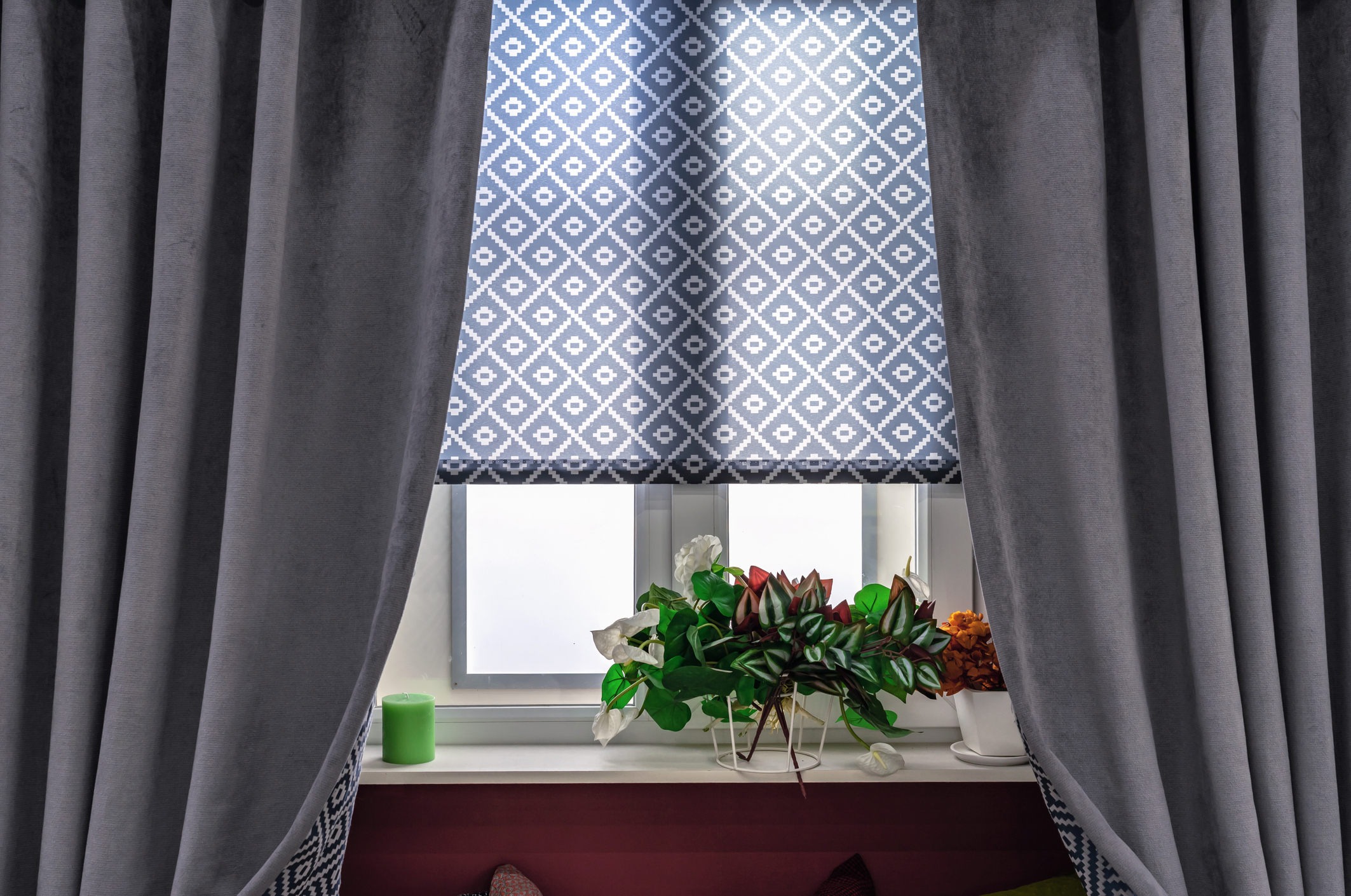 Window treatments can improve the functionality and beauty of any room in your home, but picking the right ones can feel daunting. Before you can start matching your window treatments with your furniture or design preferences, you need to decide what kind of window treatment you want to use. Drapes, curtains, shades, and blinds can all be excellent window treatment choices under the right circumstances, but the range of choices can be overwhelming. Some people may use these four terms interchangeably, but this is inaccurate and only spreads further confusion. Howard’s Upholstery has created this guide explaining the four main types of window treatments to help our customers make informed design and purchasing decisions.
Window treatments can improve the functionality and beauty of any room in your home, but picking the right ones can feel daunting. Before you can start matching your window treatments with your furniture or design preferences, you need to decide what kind of window treatment you want to use. Drapes, curtains, shades, and blinds can all be excellent window treatment choices under the right circumstances, but the range of choices can be overwhelming. Some people may use these four terms interchangeably, but this is inaccurate and only spreads further confusion. Howard’s Upholstery has created this guide explaining the four main types of window treatments to help our customers make informed design and purchasing decisions.
Drapes
Drapes are a type of window treatment made from fabrics such as silk, velvet, damask, linen, cotton, or polyester hung from a bar on top of the window frame. The fabric used is relatively stiff to block outside light from entering a room. Drapes are also used to stop passersby from seeing through your windows.
The particularly strong light-blocking and privacy-protecting features of drapes make them perfect for bedrooms, but they can also work well in living rooms and other similar spaces. Beyond the mere functionality of drapes, this type of window treatment also provides visual interest to any room in which they are installed and can give rooms a more formal aesthetic. Drapes are typically long enough to stretch from the top of the window to the floor.
Curtains
“Curtains” and “drapes” are sometimes used interchangeably (and they do have some similarities), but they are still distinct types of window treatments. The biggest difference between curtains and drapes is that curtains are typically made of a lighter fabric that does a poorer job of blocking light (though blackout curtains are an exception to this rule). Curtains also are less formal than drapes. While, like drapes, curtains are used for blocking light and preserving privacy, overall, they are used more as decoration.
Curtains are a versatile window treatment that comes in a wide range of widths, lengths, fabrics, colors, and patterns. The versatility and diversity of curtains mean that they can be used in any room and can be made to match any interior design scheme. Curtains are a great way to add color, texture, and pattern to rooms that lack these qualities. If you want to install particularly translucent curtains that don’t block as much light as you’d like, you can pair them with other treatments, like shades or blinds.
Shades
Shades are a type of window treatment that is made of cotton, polyester, linen, vinyl, or even bamboo. Unlike drapes and curtains, shades are sized to fit within a window frame, rather than above it. Shades are raised and lowered using a roller, cord, or other lifting mechanism rather than by being pulled horizontally along a bar the way draped and curtains are.
There are numerous styles of shades, including Roman shades, roller shades, balloon shades, cellular shades, and tie-up shades, that each have their aesthetic applications. Shades can work well in any room and they can be paired up with other types of window treatments, like curtains. The light-blocking abilities of shades vary from being able to moderately darken rooms to totally blocking out all light from the outside world.
Blinds
Blinds are composed of vinyl, wood, or aluminum slats that can tilt open to let in light and allow you to see through them. Blind slats, which are technically called louvers, are typically 1/2 an inch, 1 inch, or 2 inches tall. A big advantage of blinds over shades is that you do not have to fully raise your blinds to see outside, since you can tilt them open.
However, blinds and shades do have other things in common. Both kinds of window treatments lift up and down with a roller, cord, or similar lifting mechanism. Blinds are also made to fit into window frames, just like shades. They come in several main varieties, including Venetian blinds, vertical blinds, and panel blinds. Blinds come in a range of color tones, and they are not typically printed with patterns. They can be aesthetically pleasing on their own or when paired with curtains.
Our Custom Window Treatments
No matter what type (or types) of window treatments you want to install in your home, our skilled professionals can give you what you are looking for. Howard’s Upholstery is proud to provide a variety of custom window treatment options to our clients. Our custom window blinds and drapery services are truly one of a kind and we will work with you to choose the right fit. Give us a call today!
















